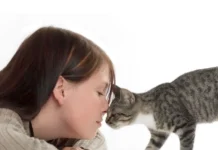Understanding Your Cat’s Sounds: A Comprehensive Guide
Many cat owners often wonder about the meanings behind their feline friends’ sounds, from soft purrs to loud meows, hisses, and growls. Each sound serves as a communication method for cats, indicating various emotions or needs. Here, we break down the 11 most recognized cat sounds and their significance to help you better understand your pet.
What Do Cat Sounds Mean?
Cats communicate using a variety of vocalizations, each carrying its own message. While a meow might simply be a greeting, it could also signal a deeper issue that needs attention. Understanding these sounds can lead to a happier and healthier relationship with your pet.
The 11 Most Common Cat Sounds and Their Meanings
1. Short Meows
A short meow usually indicates a friendly greeting. Your cat is simply expressing happiness at seeing you. Responding with a gentle pet or some attention is appreciated.
2. Multiple Meows
When your cat lets out several meows in quick succession, it signifies heightened excitement or happiness. Similar to the short meow, it’s an invitation for interaction.
3. Mid-Pitch Meows
Mid-pitch meows typically indicate your cat is asking for something, such as playtime, attention, or food. If mealtime is approaching, you’re likely dealing with a hungry kitty.
4. Long Meows
Longer meows are often a more demanding request. Your cat may be seeking immediate attention, may be very hungry, or could be asking to go in or out of the house.
5. Low-Pitch Meows
A low-pitch meow conveys unhappiness. It’s a form of complaint, often signaling that your cat needs something, such as food or attention.
6. High-Pitched Meows
This sound indicates distress or pain. If your cat issues a high-pitched meow, check for potential injuries or discomfort.
7. Growls or Howls
Growling indicates aggression or a warning to stay away, often in response to perceived threats or territorial disputes. Howling signifies distress or urgent need for help, potentially due to an injury.
8. Hissing
A hiss expresses fear or irritation. It’s typically a defensive response to unfamiliar situations or threats, signaling that your cat feels threatened.
9. Chirping
Chirping or chirruping indicates your cat is excited or frustrated, usually when they see prey outside without the ability to chase it.
10. Caterwaul
This low moaning sound indicates that a female cat is in heat and ready to mate, often accompanied by a specific body posture and gaze.
11. Purring
Purring is generally a sign of contentment. Your cat purrs when they feel happy, comfortable, or relaxed, often while resting or being petted.
Tips for Managing Excessive Meowing
If your cat meows frequently, it’s important to understand the underlying reasons. Here are some strategies to help manage your cat’s vocalizations:
- Provide plenty of toys and a comfortable environment to keep your cat entertained while you’re away.
- Feed your cat multiple small meals throughout the day to prevent hunger-related meowing.
- Spend quality time playing with or petting your cat to fulfill their need for attention.
- Monitor for signs of discomfort, and consult a veterinarian if you suspect health issues.
Conclusion
Understanding your cat’s vocalizations can significantly enhance your bond and ensure their well-being. Each sound carries meaning, and by recognizing these signals, you can better meet your cat’s needs. If your cat’s vocal behaviors are overwhelming, consider consulting your veterinarian or a pet behaviorist.
For further exploration into unique cat sounds, listen to the intriguing calls of the Caracal cat. The sounds of these lovely creatures can add a delightful twist to your mornings!
This insightful piece was contributed by Annie, the founder of MeowKai, who specializes in cat behavior and health. Share your thoughts or experiences in the comments below!












